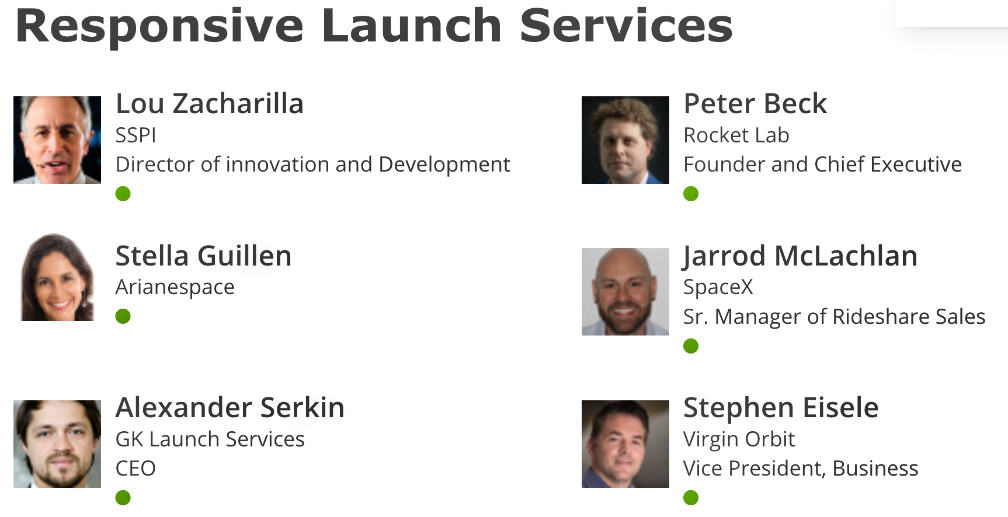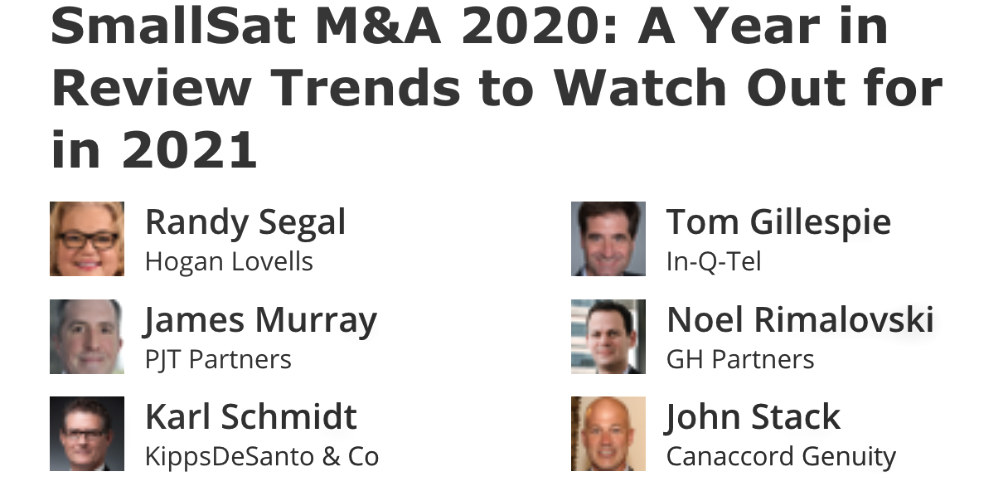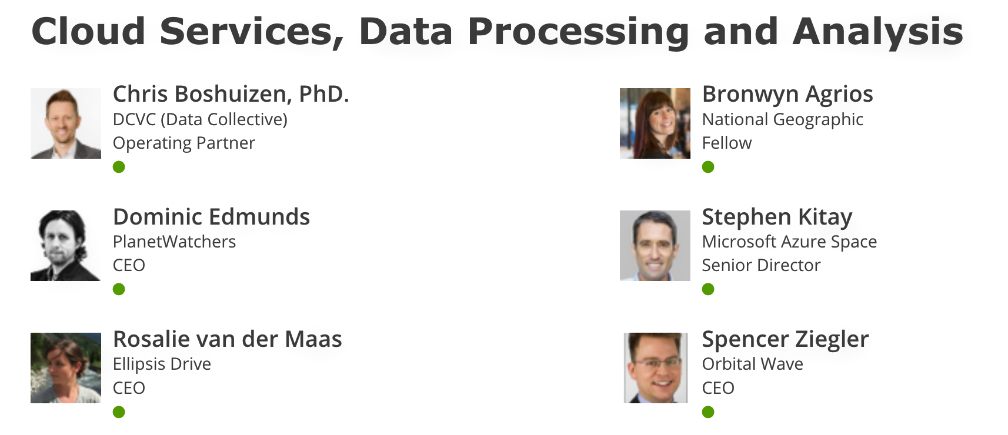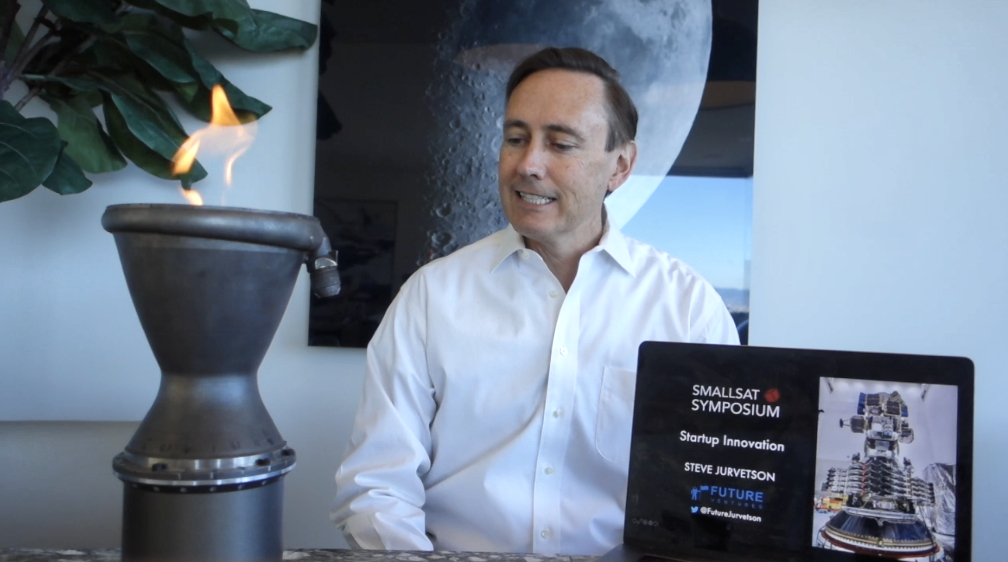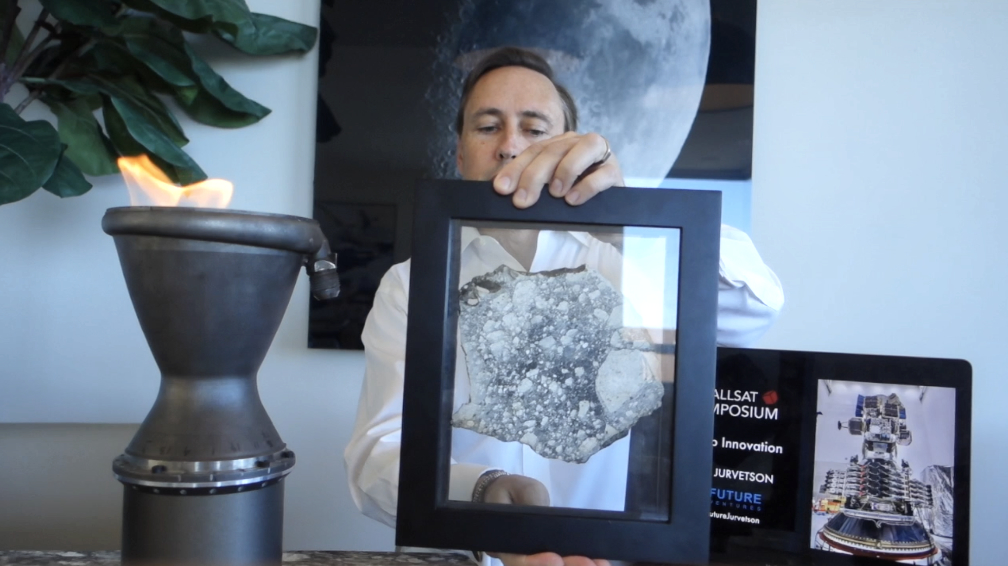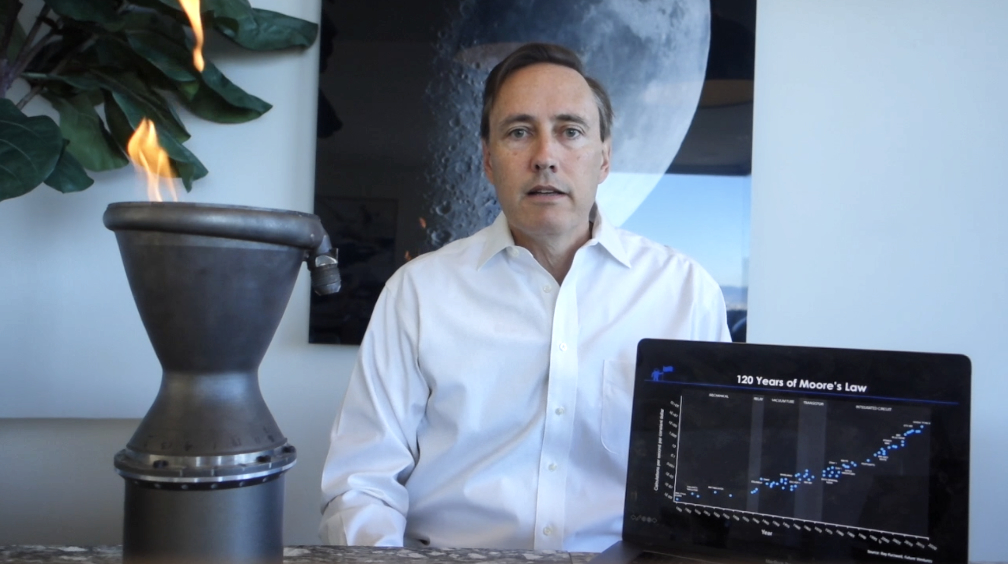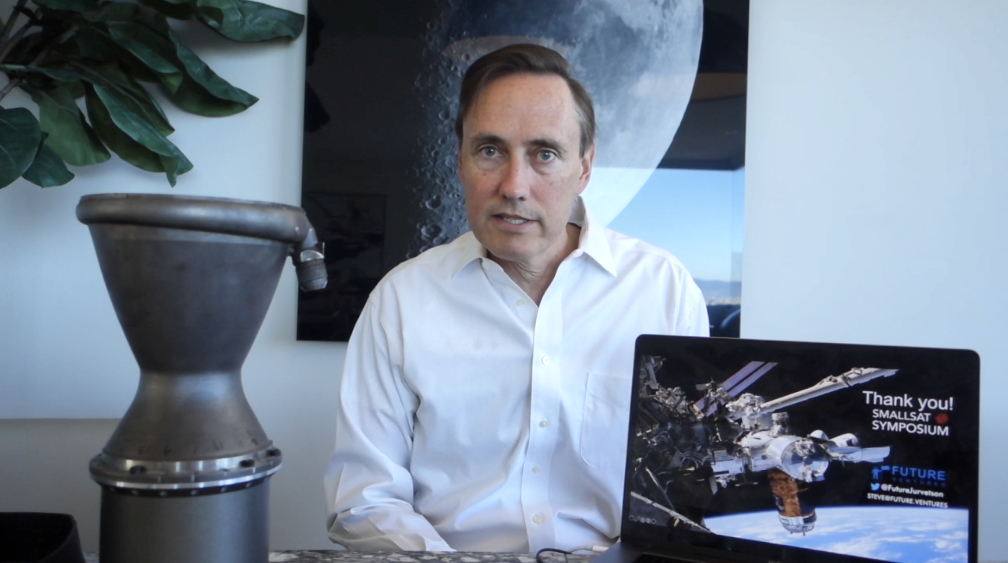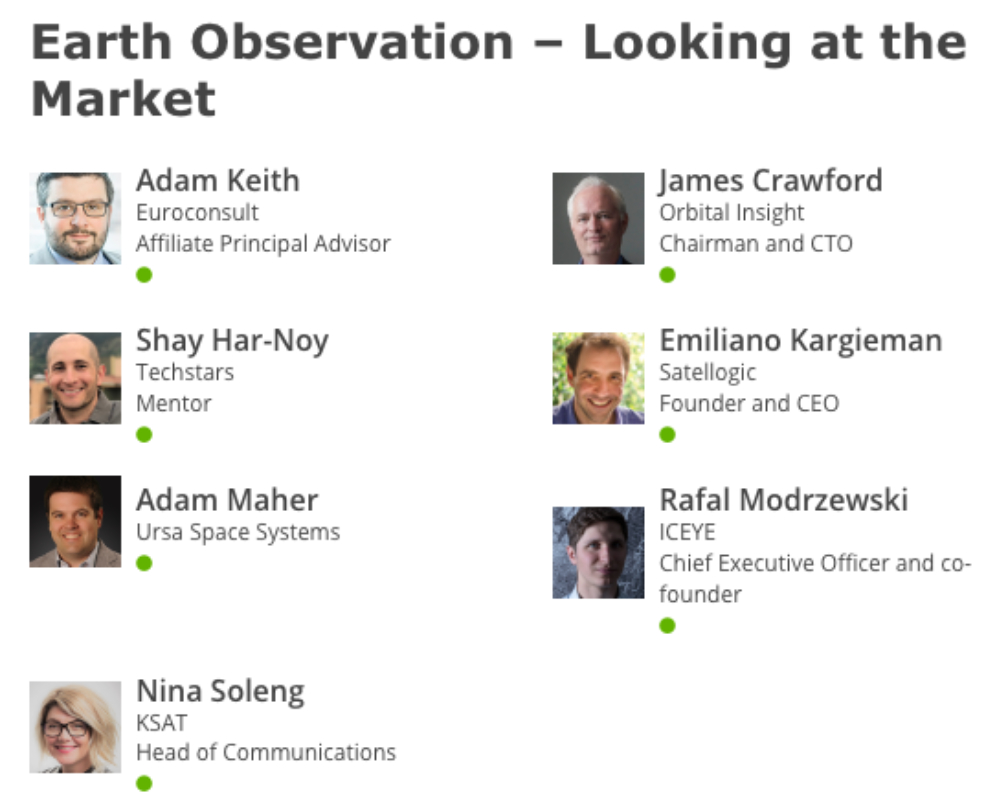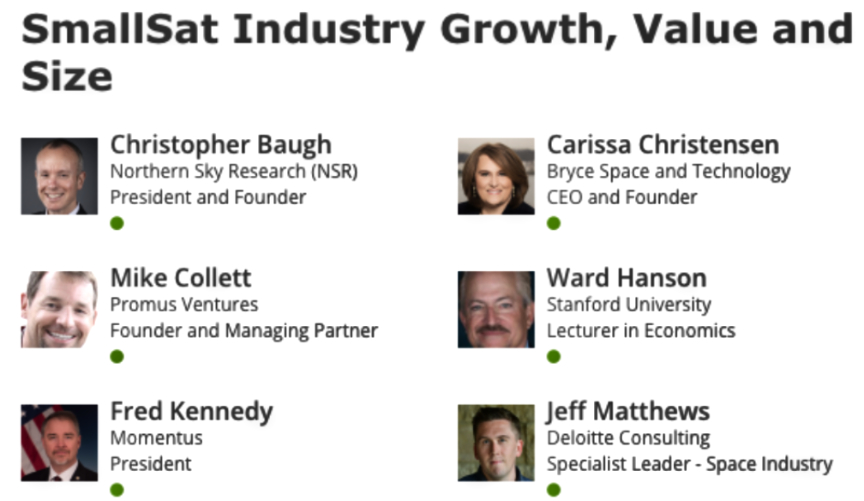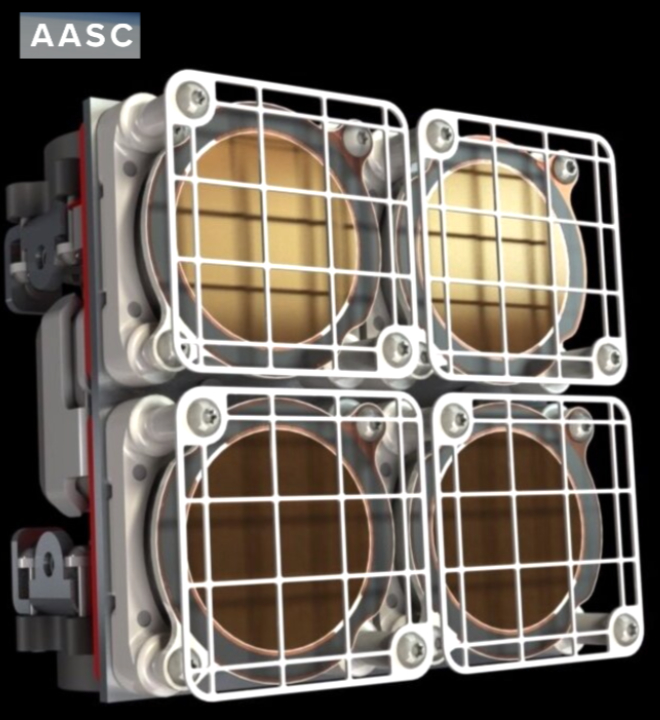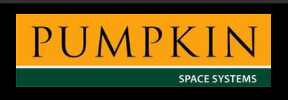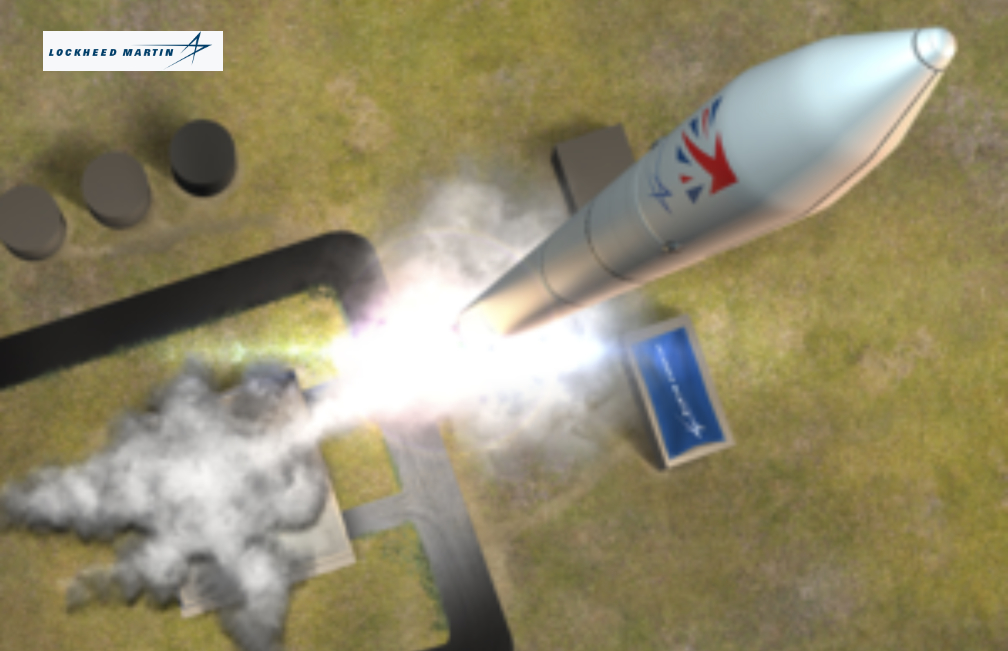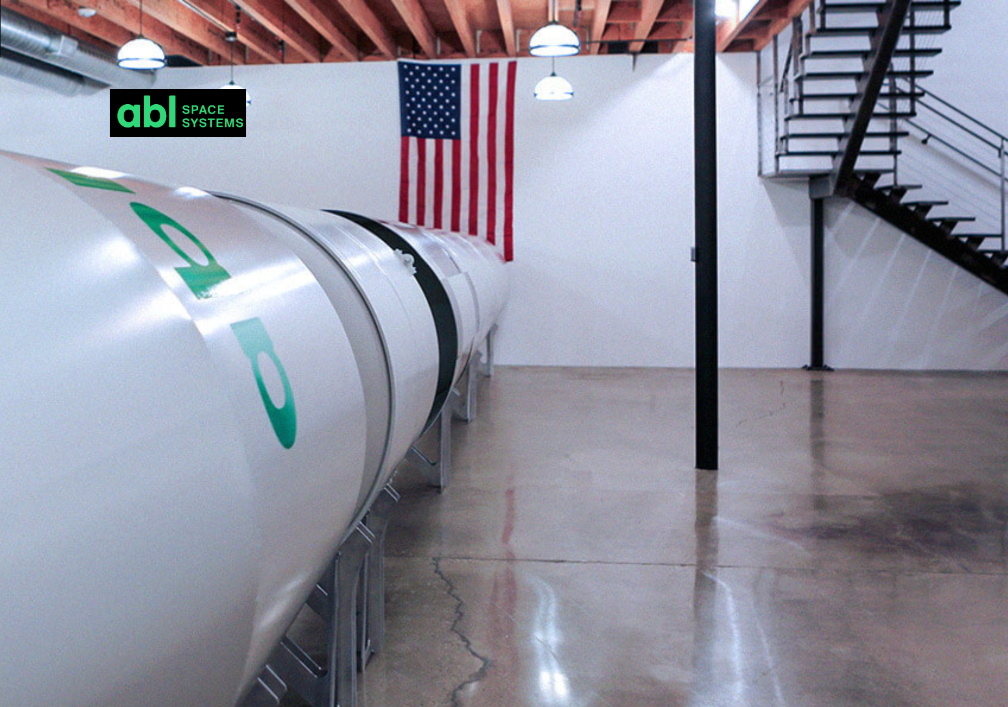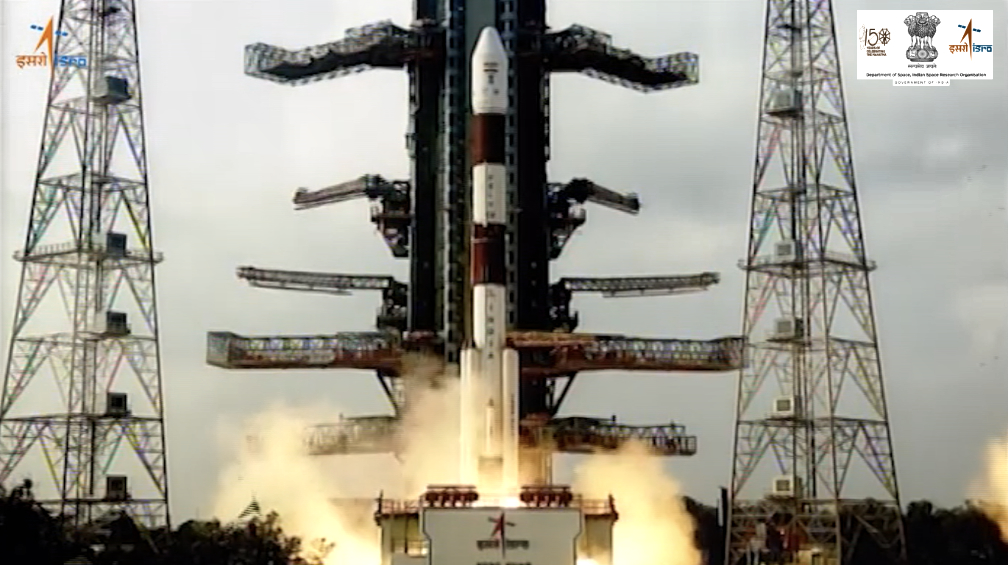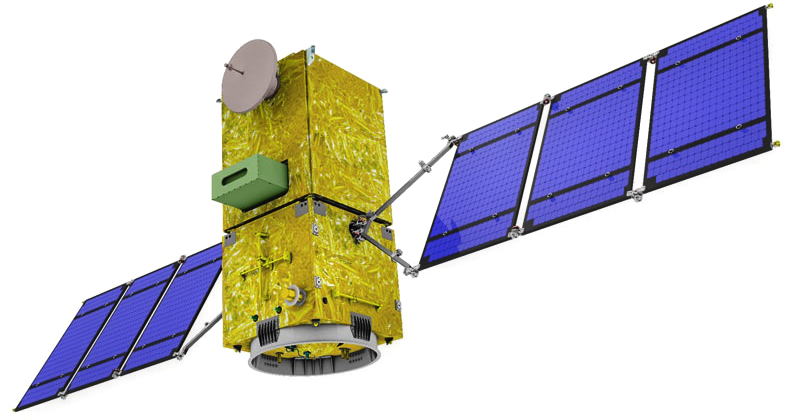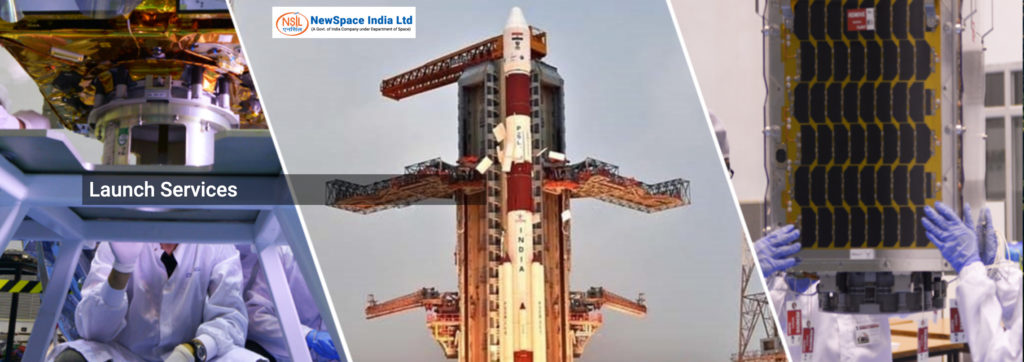
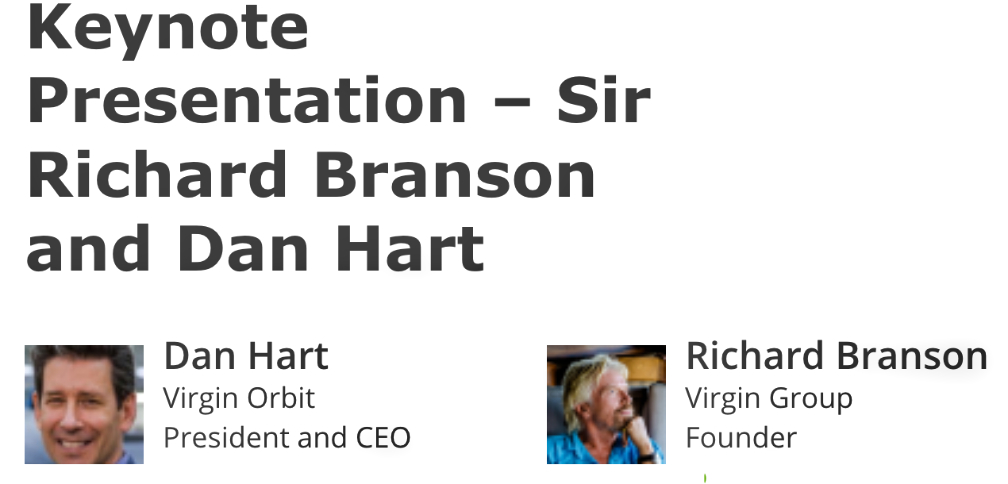
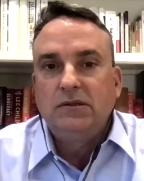
Chris Stott, Executive Chairman, Mansat, was the moderator of this extremely interesting interview of Sir Richard Branson, the Founder of Virgin Galactic, and Dan Hart, the President and Chief Executive Officer of Virgin Orbit, on Day Three of the SmallSat Symposium.
Chris Stott (CS): Gentlemen, you are making the extraordinary look amazing. That launch was superb and that must have been quite a moment, I mean, that was the 17th of January, not quite a month ago, you hit all of the points on the curve. So, how did it go? What’s next for Virgin Orbit?
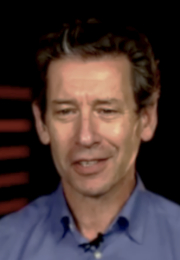
Dan Hart (DH): It was an incredible day. It was picture perfect. We’ve now gone through the data review with and are still pinching ourselves. The orbit was perfect. Ten satellites in their place. We’re getting videos and pictures from excited students and researchers as they activate their spacecraft. It went better than anybody could have ever dreamed. Every part of the system came together.
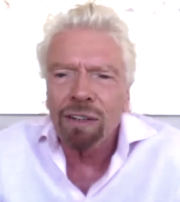
Sir Richard Branson (RB): I’ve had quite a few tears in my eyes the last 12 months between Virgin Galactic and Virgin Orbit. I definitely teared up on this one. The team have worked unbelievably hard the last four years to get to here. What they were trying to achieve was note easy and we we’ll be able to launch on numerous 747s from different parts of the world. We want to be able to build rockets and ship out quickly to different parts of the world. We want them to be able to go in to the right orbit or any orbit anywhere in the world. They ticked all of the boxes and I couldn’t be happier.
CS: So, your timing on this was superb because there’s a lot of tough competition in the launch services industry right now. You’ve had a couple of competitors launch recently. You’ve been at this for a while. So, how do you see yourselves in this competitive environment?
RB: I think we’re operating a different proposition to most of the other people. We can take up more weight than in the size of the satellite and we’re going to be building rockets that are much bigger than the current rocket, as well. They’ll take up even more weight. There is an enormous demand for the kind of project we are doing, i.e., the launch from a 747 anywhere in the world, both from commercial people to put new satellites up. I think what makes us particularly unique is our capability for the US Air Force or the British Air Force, the Canadian Air Force, French Air Force, all of whom have been encouraging and working with us over the last two to three years to give them an extreme deterrent capability so that if they were to lose satellites anywhere in the world, they can be replaced incredibly quickly. If we do this cleverly, what 747 can take those satellites up, they won’t know – we can convert enough 747s and much more difficult for an enemy power to know planes than just one ground based launch which they can take out in a minutes notice. We’ve got quite a range of things that this company is capable of.
DH: If I can pipe in, I just want to shout out to the Virgin Orbit team. This is a team that… I respect any team that can take a rocket and can get to 17,000 mph or more. This is a team that came together and brought a new capability… I mean, this is the first time a liquid rocket flew from an airport under the wing of a 747 or any airplane and ended up in orbit. And so the team really advanced space technology, proved it operational and we have, as Richard said, unique capability, both from an affordability point of view and the economics of getting a rocket into 35,000 feet before it has to do any work and the flexibility, the resilience, and the deterrent that Richard mentioned. And the ability, you know, we have about 80 space agencies around the world – I think the amount of countries that have launch within their sovereign shores right now can probably be counted easily on two hands and so there’s an enormous desire and opportunity to democratize our ability to have humanity get to space.
RB: With COVID, it was not easy — everytime we were about to do something, one member got COVID so everybody had to climb down and then come back again and then somebody else got COVID, but somehow they got there, but it was, like every company in the world, it was a challenge and the team was no exception.
CS: If you can pull this off in regular time, that is extraordinary. To do this in these times of historic moment with COVID is astoundingly good and it speaks volumes to the people you have working with you. You have that ability to not just launch in the United States and I think you’ve got a launch coming up… at some point, you’re going to be the first launch in the United Kingdom. Is that correct?
DH: Yes, that’s exactly right, in Cornwall. We’ve been working with Cornwall for a couple of years now and the project is moving along well and we look forward to next year to doing our first launch at ???? airport.
RB: Many happy memories of Cornwall, a beautiful part of Britain.
CS: You’ve recently started to expand what Virgin Orbit has been doing. You took a stake in a satellite communications company, Sky & Space Global. Could you please talk us through that?
DH: You know, launch is a cornerstone of, obviously, space access and the whole space ecosystem. Our ability to flex into adjacencies is a natural. Sky & Space Global is an initial step there. We really look forward to working and developing a system and other systems. We see an evolution for the company obviously through launch, through distributed launch, both for the national security community as well as the international community of Allies, and then there are a plethora of space adjacencies, whether its in other aspects of national security, or in the commercial turnkey kinds of systems like Sky & Space Global is going after.
CS: Is it just limited to satellite communications or is it a broader look at anything that goes into orbit with Virgin Orbit?
DH: We have a pretty expansive evolution of the company planned. We’re evaluating right now with this success there’s lots of possibilities and, frankly, we’re getting lots of queries.
RB: I think something I would like to encourage the company to do and more than welcome to take this onboard is that there will be a lot of people who do approach the company with wonderful ideas to put satellites in space. It’s just that they can’t afford it. What we can also now start doing is helping them get their projects off the ground, maybe take a stake in the company, and get their satellites to orbit. We’re entrepreneurs through and through and that’s the kind of entrepreneurial thing that Virgin Orbit should be doing. If there are people out there that have great ideas, you know, put something in space but they can’t afford to do it, then we could maybe do it in terms of a stake in the company.
CS: Fascinating. I would imagine then that they would have to reach out to Dan?
DH (laughing): I think my phone is starting to ring now!
CS: Don’t put your email up, Sir Richard. What is this group you are building? How do you see all of the space companies working together? And where does space fit into the Virgin brand?
RB: Virgin Galactic and Virgin Orbit don’t fit together in a sort of too obvious a way. which is why we split the companies into two separate entities, one putting satellites into space and the other putting people into space. But they’re both incredibly important to the Virgin Group. Obviously they came along and saved the Virgin Group. I’m a great believer in diversification, so that, if something like SARS or COVID hits you, or 9-11 or whatever, you’re diversified enough to be able to help the companies that are in trouble and when COVID hit, we launched our Cruise line the day before COVID hit – that wasn’t a great idea – we had two airlines – that wasn’t a great idea – we had the biggest fitness chain outside America – that wasn’t a good idea – including South Africa – we had hotels around the world – that wasn’t a good idea – and so it goes on. So, the one shining light has been Galactic and Orbit and thank God we did diversify into space. I didn’t diversify into space thinking I am going to make lots of money out of space. I diversified into space because I love space, I love connecting people, I love the idea of giving people the opportunity to become astronauts who could never generally afford to become astronauts, I love creating things. I love my granddaughter who is two looking up at the sky. After Dan’s rocket went into space, and pointing up and saying Pappa’s rocket’s on the moon. Pappa’s rocket is on the moon. Anyway, there’s lots of reasons, but if it can help pay the bills to a varying degree, we are very, very grateful to space.
DH: I would also add that from the other side being in a space company that’s part of Richard’s creation of Virgin, there are some special elements – and Richard touched on some of them – you know, this feeling of purpose, that we’re in this to make a difference, and as well as the agility kind of thing that Richard expressed a little while ago for an entrepreneurial company, our sights are set high and we’re agile… it doesn’t take a lot of discussions and meetings when a good idea comes to say let’s go for it. Those are things that I’m continually reminded of through discussions with Sir Richard and the team that he has built at Virgin.
CS: Sir Richard and Dan, you both just talked about the importance of people. I’m an entrepreneur myself — I keep tabs —- and you have some great quotes on people. “Employees come first. If you take care of your employees, they will take care of the flow.” And that’s something we’ve always done at our company, ManSat, and its always because we followed your lead on that. Sir Richard, how do choose your teams? How do you choose your people?
RB: First of all you need somebody like Dan who genuinely cares about people, who cares about the cleaning lady or cleaning man as much as they care about their fellow directors, who look for the best in people, who praises and doesn’t criticize. If somebody messes up, doesn’t jump down their throats. When I was a kid, if I ever said anything ill of somebody, my parents would stand in front of the mirror for ten minutes and tell me how badly it reflected on myself. I think it’s that kind of approach is really important if you are running companies. The kind of people we take on are people who are great with people first and then we look for the other skills. It seems to work well at certain companies.
CS: Dan, you’ve just taken on a whole bunch of new people. You’ve demonstrated your great with people and teams and you can achieve your milestones but you are just taking on so many people, so what do you look for?
DH: Obviously you want to have some good level of skill but the positivity, the feeling of wanting to move forward and work together, is probably the most crucial part of pulling a team together, especially when you’re going to take on a hard job and working together, sometimes in stressful days, and the ability to laugh, the ability to shake off a setback and move forward, it is absolutely critical. And I think our company is a great mix of people who are new to the industry or in their first decade of work and then people who have been around for a few extra years like myself, and combining that and doing it well I think is absolutely key. The next group who are going to take us to planets and to different capabilities around the world are here and it i s really exciting to see them rising and making the system real.
RB: In the process of what you’re doing and there’s no fun in doing something unless people are going to be inspired by it and believe in it. A lot of our lives are spent at work and its critical that you don’t waste your life and say you’ve got to create something with real purpose.
CS: Sir Richard, is space the hardest thing you’ve ever done?
RB: Yes. But then again, if you’d have asked me the same question 36 years ago when we had one, second-hand, 747 flying between London and New York with British Airways with 300 planes I suspect I would have said yes, yes to Virgin Atlantic. We have set ourselves some quite big challenges and that’s made it tremendous fun, trying to overcome those challenges and trying to deal with some much bigger competitors.
CS: Dan, you spent 34 years at Boeing, one of the largest aerospace corporations in human history, and you left and joined a startup?
DH: I stared when I was 12. It was really a great transition and, honestly, I had a wonderful career with Boeing and McDonnell Douglas that was part of that in the early years. I got to do incredible things there, whether it was space labs or missile defense, or satellites, Delta rockets, but when I got the call, there’s an opportunity to work with Virgin and Sir Richard and do something new for space launch, there was no turning that down. It’s been a great learning experience, honestly, on different ways, different cultures, different ways to operate, the speed of which I learned up front. In my old job, sometimes you would have a number of meetings to make a decision. I think the first time I had a big decision and I asked Richard, he looked at me and said, you’re doing that, aren’t you?
CS: The power of delegation. We’ve got about three minutes and I have three very quick questions. Sir Richard, you look prescient when you did a SPAC… you were the first in the space industry to do a SPAC back in October of 2019. Now everyone’s talking about them. What led you down that path to be the first to go do a SPAC for space?
RB: I’m impatient.The SPAC gets through all of the rigamarole of public companies. Yes, I thought, that’s great, let’s do it.
CS: Well, it worked, that’s great. Gentlemen, last question… before a launch, before something big is about to happen, how do you center yourself? What is your moment of Zen? How do you, kind of, stay focused?
RB: I was lucky enough to have five grandkids running around me so think that kept me distracted, which is what I think I needed. Poor Dan didn’t have that chance. He was out there on the firing line.
DH: Well, I mean, for me there was a schedule of things I needed to do and people I needed to interact with, whether it was with the flight line with the launch team, greeting the flight crew as they came or interacting with the mission control folks, so luckily I had things to do. I will say I’ve never before done a launch where I was in a room by myself, which is where I ended up. We were distributed because of COVID and I’ve never experienced anything like that. It was very interesting sitting by myself, listening to the countdown, and interacting with the team. I sometimes thought the room should have been padded because of the intensity of the situation. That’s how we interacted. We were virtual and it worked, but none of those normal queues that you usually get with a countdown, you’re nodding at each other, having little sidebar discussions, none of that. It was all business.
CS: Virtual high fives… gentlemen, what advice do you have for entrepreneurs in the space industry?
RB (laughing): Good luck! Dream big and if you come up with an extraordinary idea, there will be people like myself or Dan who will most likely help turn it into reality. There’s so many extraordinary breakthroughs taking place these days and we’re looking to the next one and our doors are open.
DH: I would just say lock on to that dream, that purpose, know that it’s going to take time and you’re going to have great success and you’re going to have failures along the way and be ready for them. Use both success and failures as lessons to propel you forward.
RB: You’ll be young when you start and you’ll be old when you finish (laughing).
CS: Sir Richard, you’ve always said your dreams don’t scare you, they’re too small. And you’ve got a big event coming up with Virgin Galactic this week. What’s next for Virgin Galactic?
RB: Well, we have another milestone hopefully in Virgin Galactic’s history on Valentine’s Day. I’m delighted to say we’ve managed to get a thousand messages, love messages, from people who have been following Galactic on board and I just got the message that they managed to pack a thousand in and we’ll be on the edge of the seat watching this test flight go up – I mean, every test flight is there to try and see if it takes everything up and then we’ll have one more test flight for this and then I’m ready, fit and healthy and got my passport and waiting, waiting to go up.
CS: Sir Richard and Dan Hart, thanks so much for everything you do. And with that, thank you your participating in this year’s SmallSat Symposium.



